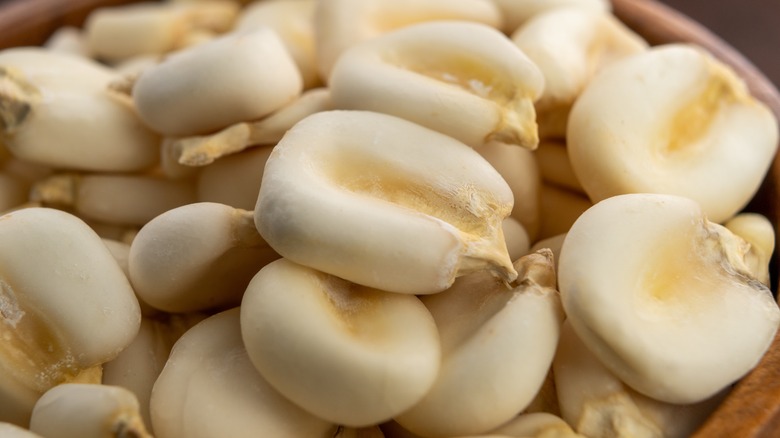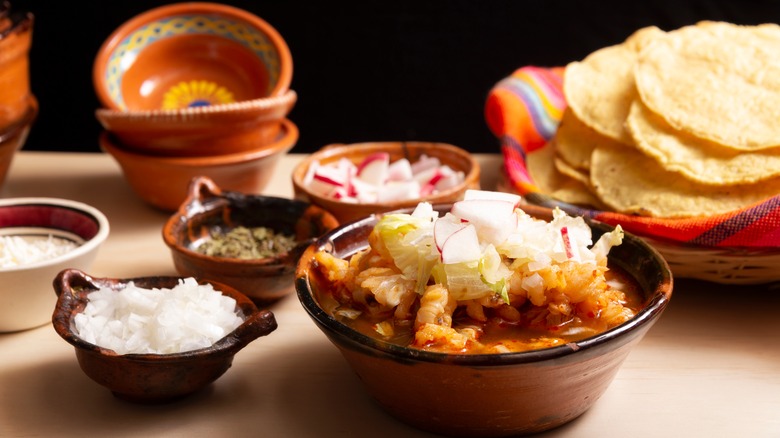Hominy Belongs In More Recipes Than You Think
Chocolate, vanilla, and avocados are among Mexico's many native crops, but none is cherished more than corn. Corn isn't just a staple carbohydrate in Mexico, but a crucial part of Mexican identity; both pre-colonial and modern Mexicans refer to themselves as "hijos del maiz" or children of corn. Hominy is the result of an ancient yet revolutionary Mesoamerican practice and the foundation for Mexican cuisine.
Traditional Mexican corn is white corn, or dent corn, with a savory flavor and a denser, meatier texture than the yellow sweet corn popular in North America. Mexicans eat white corn on the cob like the rest of us, as a common street food snack, coated with chile, lime, cheese, and mayo. However, what Mexicans have done with it off the cob shapes their culinary culture; that is, a process called nixtamalization. Dating back to pre-colonial civilizations between 1200 and 1500 B.C., nixtamalization is a practice that soaks white corn kernels in lye or any alkaline liquid to augment corn's nutritional value, digestibility, flavor, and texture.
Hominy is white corn that undergoes nixtamalization. It looks like giant white corn kernels, with an intense corn flavor and an even meatier chew than white corn on the cob. Latin American and Caribbean cuisines use hominy in countless dishes and drinks, with a growing popularity in North American recipes as well.
Hominy recipes: Traditional and modern
Hominy is a versatile and nutritious ingredient that has numerous usages, beginning with traditional Mexican preparations. The most obvious use of hominy is grinding it into masa or dough to make tortillas and their countless derivatives including tostadas and tortilla chips. Central and Southern Mexicans use ground hominy to prepare atole and pozol, two thick, filling corn beverages. Atole is served hot and flavored with anise and brown sugar, while pozol is served cold and comes flavored with coconut, peanuts, or cacao. The most famous Mexican dish to use whole kernel hominy is pozole, a delicious soup that originated in the Aztec empire and remains a Central Mexican specialty with numerous variations.
In the Caribbean islands, ground hominy is a popular breakfast porridge dish made with sweetened condensed milk. Ground hominy is also the foundation of corn grits, corn cakes, and cornbread in Latin America and the Caribbean. Venezuelans and Colombians use dried hominy flour, or "maseca," to make arepas, a beloved national dish. You can find hominy canned and preserved in water or dried in bags at most grocery stores labeled as white hominy or "mote blanco." Hominy is a hearty and comforting ingredient with a distinct corn flavor that shines through, no matter what other ingredients you pair it with. It tastes wonderful whole or ground, in casseroles, gratins, vegetable stir fries, patties, stews, soups, and salsas. The sky's the limit!

